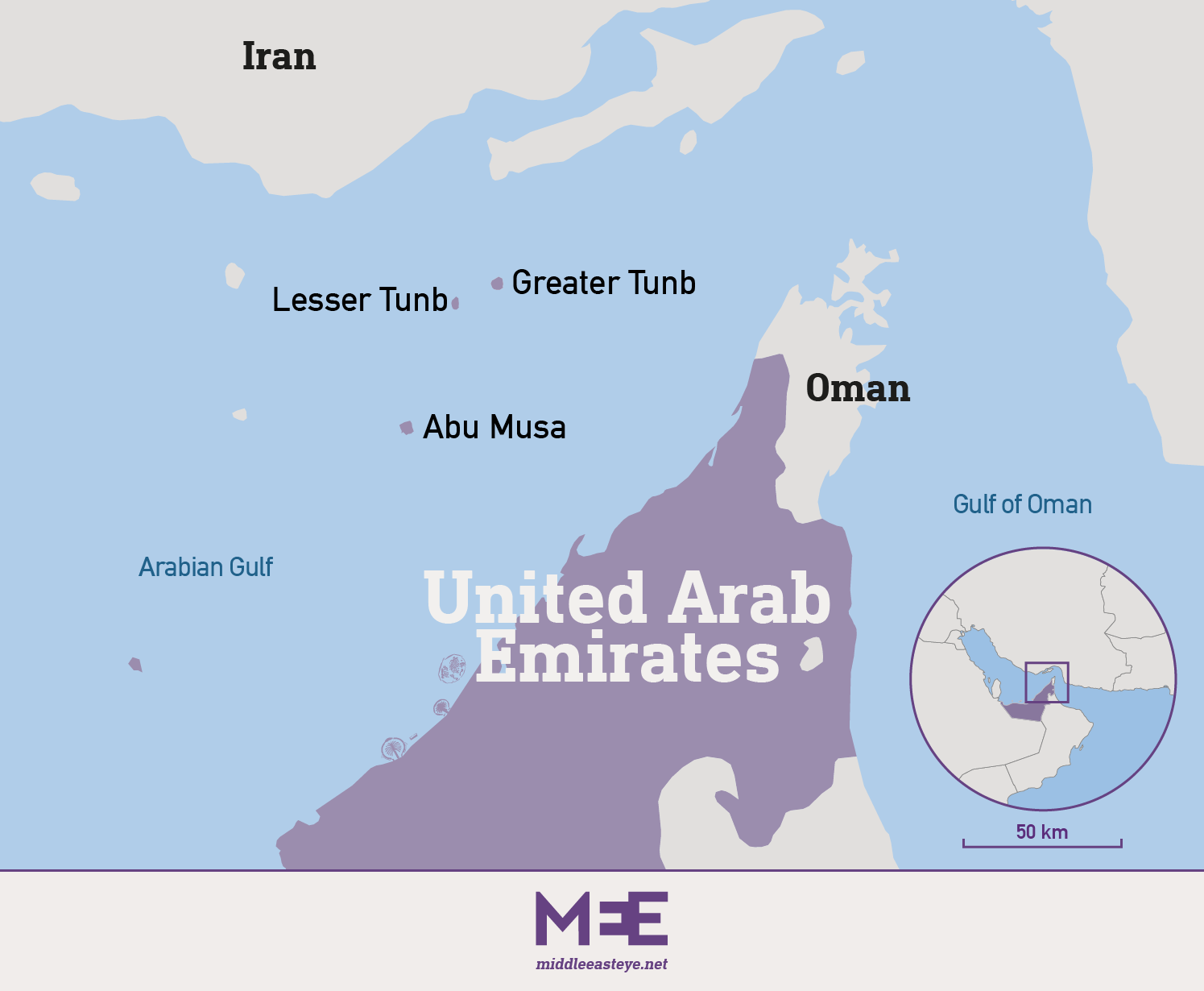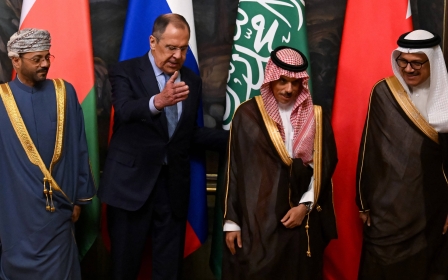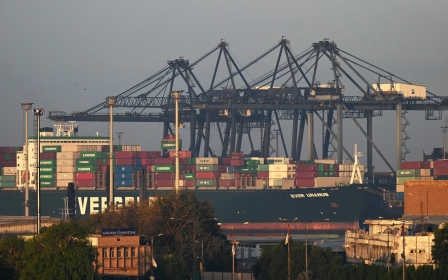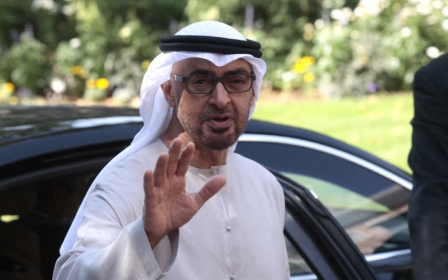Why are Iran and the UAE feuding over these Gulf islands?

Iran’s Revolutionary Guard Corps (IRGC) launched naval drills on Wednesday near a string of strategic islands controlled by Iran but claimed by the UAE, amid rising tensions with the US.
The manoeuvres, held near Abu Musa island but also around Greater and Lesser Tunbs, come two weeks after the United States boosted its military presence in the Gulf. The additional firepower included F-35 fighter jets and a marine expeditionary force that usually consists of 2,500 marines and at least two warships.
The build-up of US forces followed reports that the UAE has complained to Washington over what it perceives as its weak response to the Islamic Republic’s recent seizure of oil tankers in the region.
On Wednesday, Alireza Tangsiri, the commander of the navy for the IRGC, warned Iran’s neighbours against joining in the "divisive plans of extra-regional countries”.
For the exercises, Iran deployed naval vessels equipped with the Ghadir cruise missile systems and Fath 360 ballistic missiles along with drones, warplanes, and helicopters.
Stay informed with MEE's newsletters
Sign up to get the latest alerts, insights and analysis, starting with Turkey Unpacked
"The Islamic Revolutionary Guard Corps naval exercise started Wednesday morning for the defence of the Iranian islands in the Persian Gulf," the official IRNA news agency reported, citing IRGC navy commander Ali Ozmaee as saying that the drills "were held in Abu Musa island and Greater and Lesser Tunb".
The barren islands contain little in the way of natural resources. Of the three, only Abu Musa has a civilian population, which numbers around 2,000 people. But the three islands sit near the Strait of Hormuz, the vital sea passage between the Gulf and the open ocean through which around 20 percent of the world's oil, and around 25 percent of the world's liquified natural gas, pass through.
They have been a source of contention between the UAE and Iran for decades.
Iran took control of the islands in 1971, the day before the UAE won its independence from Britain, the islands' former colonial power.
Tehran says the islands have been part of successive Persian empires since antiquity and claims that a 1971 memorandum of understanding between the previous government of the Shah of Iran and the ruler of Sharjah, one of the UAE's seven emirates, justifies its military presence on the islands.
For nearly twenty years, the UAE and Iran maintained an uneasy interim agreement which led to both countries sharing Abu Musa's offshore oil revenues. However, after talks collapsed to settle the dispute in 1992, Iran began cementing its military presence on the islands.
The UAE says the islands were ruled by Arab traders for centuries and has tried unsuccessfully to bring the dispute to the International Court of Justice (ICJ) for arbitration.
Tensions around the islands were brewing even before the US beefed up its troop presence in the region.
Last month, Iran summoned the Russian ambassador in Tehran to protest a statement by Gulf governments and Moscow, challenging Tehran's claim to the three islands. The move echoed a similar statement issued by China last year.
Iran’s muscle-flexing could complicate recent efforts by the UAE and Saudi Arabia to de-escalate tensions with Iran. In May, the UAE exited a US-led multinational security force that protects shipping in the Gulf, and later said it would join a joint naval force along with Iran and backed by China.
Middle East Eye delivers independent and unrivalled coverage and analysis of the Middle East, North Africa and beyond. To learn more about republishing this content and the associated fees, please fill out this form. More about MEE can be found here.





